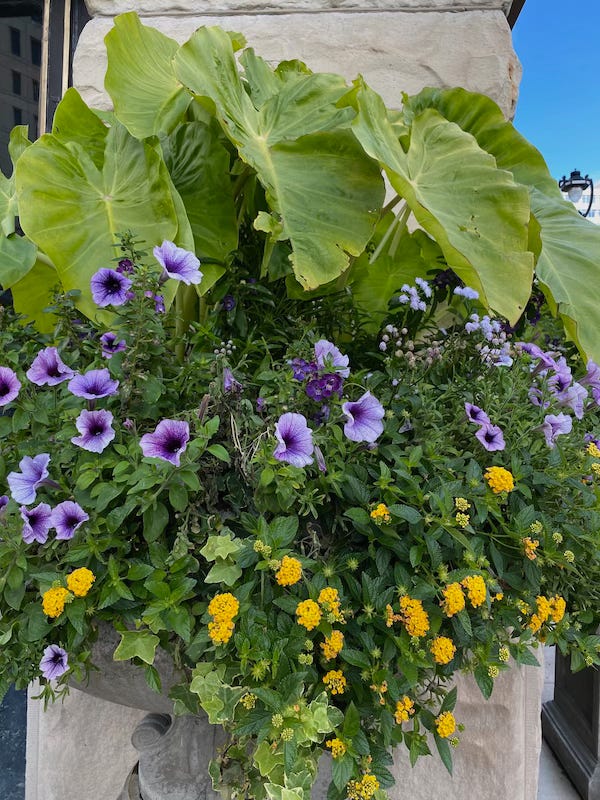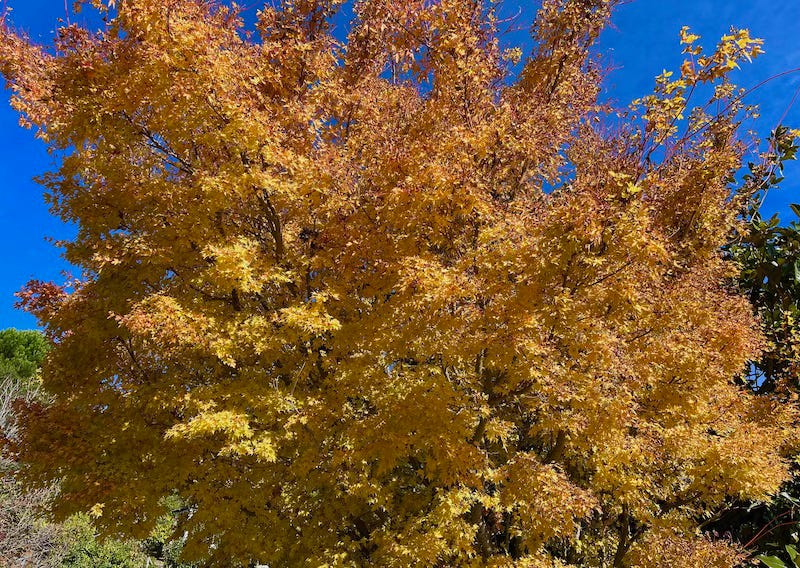“Autumn is a second spring when every leaf is a flower.” Albert Camus
After a dry and hot summer, I look forward to the warm days and cooler nights of autumn. Mostly, I get excited about the changing of the guard whereby the leaves on my many deciduous trees turn into a kaleidoscope of vibrant colors mimicking a glorious sunset.
This is the time of year when I want to decorate with orange, yellow, crimson, burgundy, and gold. Because of a combination of weather conditions, chemical processes, individual genetic traits, and physiological changes, trees change their colors. When the days get shorter and the temperatures drop, trees reduce the production of chlorophyll. Chlorophyll is the green pigment that is responsible for photosynthesis and in the fall, it breaks down and disappears from the leaves allowing other colors to surge to prominence. The yellow and orange hues that we see in leaves in autumn are always present but masked by the dominant green. When the chlorophyll disappears, the sunset or sunrise colors emerge.
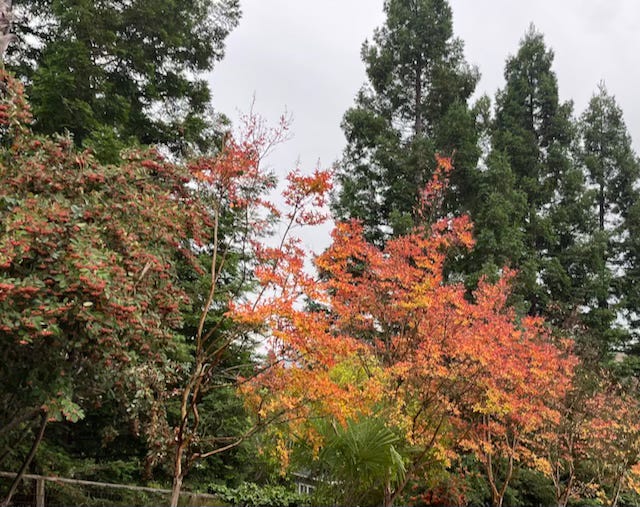
Some trees, specifically maples and oaks, produce anthocyanin pigments. These pigments create blue, purple, and red in the leaves. As consumers, we are familiar with anthocyanins when we “eat the rainbow”, enjoying the antioxidant properties of berries, grapes, cherries, plums, pomegranates, red cabbage, eggplant, black beans, and of course, wine!
Species of trees that showcase a colorful changing of the guard in fall include Japanese Maple, Sugar Maple, Ginkgo Biloba, Red Oak, Liquidambar, Aspen, Crapemyrtle, Dogwood, Black Tupelo, Chinese Pistache, Sumac, Honeylocust, Hickory, and Beech. Several of these species grow in my garden, and by Thanksgiving they will have changed into their wondrous wardrobes before the branches shed their leaves for winter.
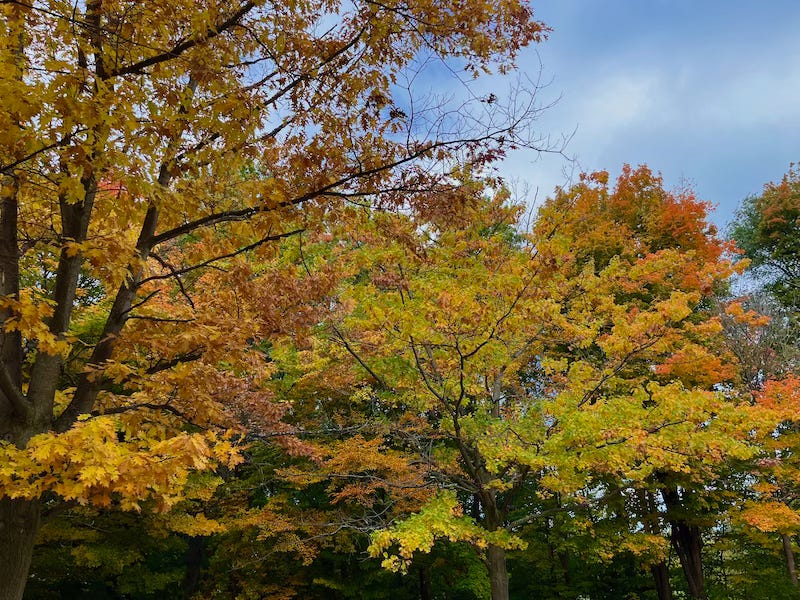
This year I joined the ranks of tourists who are dubbed “leaf peepers” because I traveled to the Great Lakes and Canada to witness the spectacular fall foliage displays. Of all the trees I admired, it was the glorious sugar maples that won my heart as they flaunted their brilliant yellow, red, orange, and burgundy leaves. Sugar maples boast an added benefit. The sap can be tapped and boiled to make a rich and delicious maple syrup. At the home of my cousin, Donnie, and his wife, I sampled two versions of this delectable syrup that they made from their backyard sugar maple tree. Holes in the tree trunk were a testament to the tapping. The sap must be boiled down to the correct consistency and the process is time-consuming. The syrup will be light, medium, or very dark depending on what month the harvesting is done. The flavors vary with the darkest syrup being the richest and most dense.
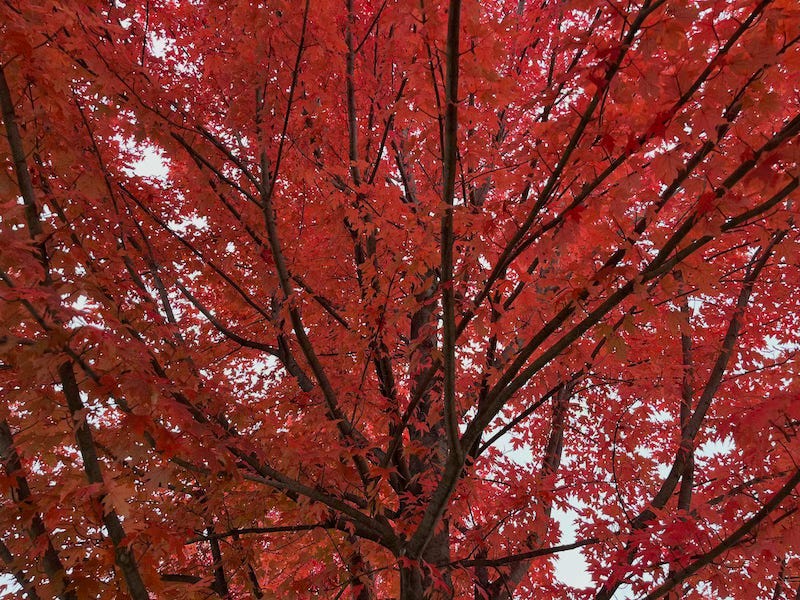
The vibrant colors of autumn are not only experienced in the changing of the leaves, but also in containers and beds planted with mums, dahlias, cannas, marigolds, petunias, roses, phlox, calibrachoas, salvias, sages, verbenas, impatiens, and coleus.
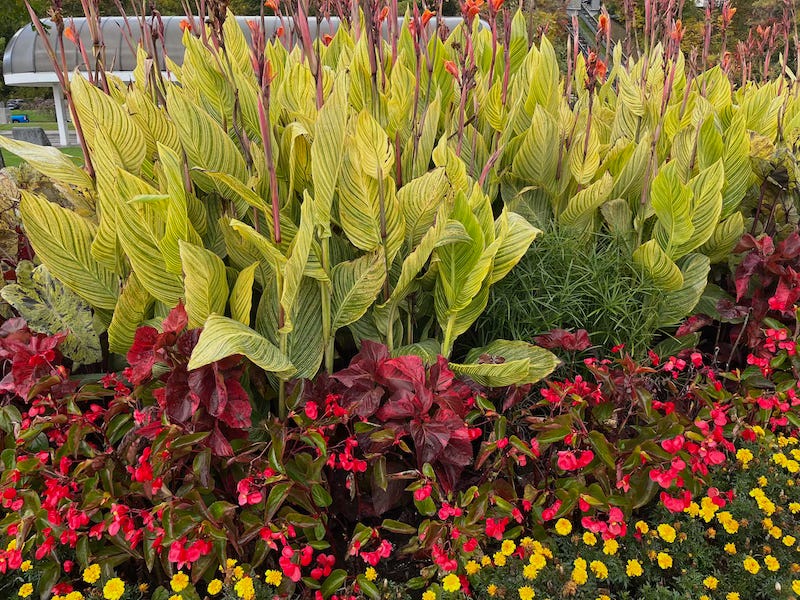
It’s easy to design a beautiful combination by tucking several different species into a container filled with potting soil, allowing calibrachoas, verbenas, and petunias to spill over the sides.
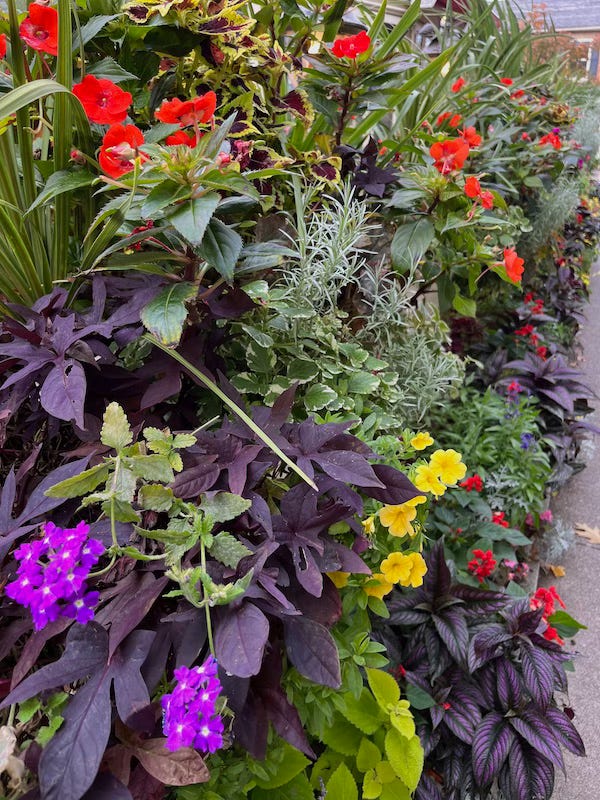
As I wander my garden, I anticipate that every leaf will become a flower bursting with burgundy, maroon, bronze, gold, red, yellow, and orange. The color guard of autumn is majestic and worth the wait. Be a leaf peeper!
Happy Gardening! Happy Growing. Happy Thanksgiving!
Cynthia Brian’s Gardening Guide for November
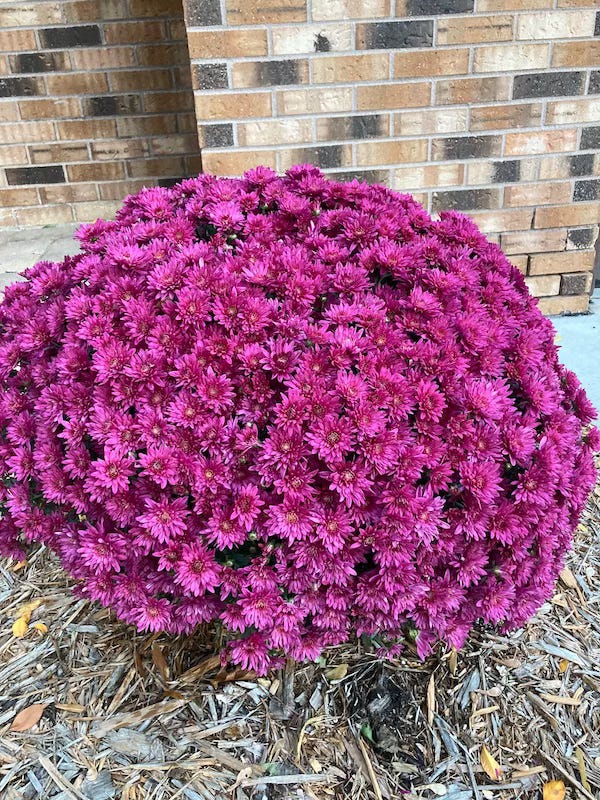
ADD your carved pumpkins to your compost pile as it is high in nitrogen. Or break the pumpkins into pieces to feed the wildlife.

DEADHEAD perennials and roses to extend the blooming season.
RESEARCH the best spots to experience the changing of the color guard. Hike, bike, or drive to photograph the fall foliage.
SCATTER wildflower seeds for a surprise spring showcase.
DIVIDE perennials including dahlias, iris, and daylilies.
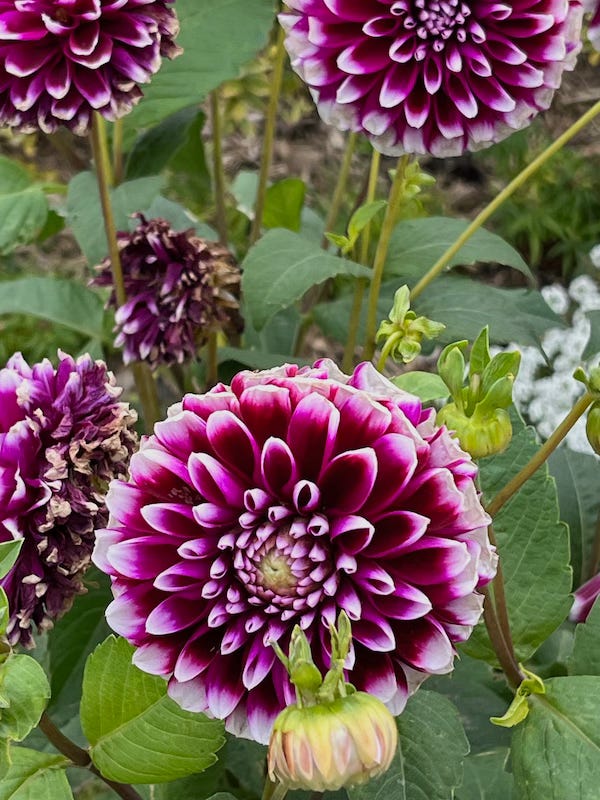
PLANT dark leafy greens such as kale, chard, and arugula in containers near the kitchen for easy harvesting.
FERTILIZE your entire landscape. For maximum absorption, fertilize immediately before it rains.
CHECK the stability of your trees. Contact a professional arborist to help with limb pruning.
BUY brilliant fall foliage trees and shrubs now at your local nursery so you’ll know what colors to expect when they are planted in your garden.
CONTINUE planting spring-blooming bulbs.
CREATE a cornucopia of fall colors in a basket with cut roses, dahlias, and tentacles of euphorbia
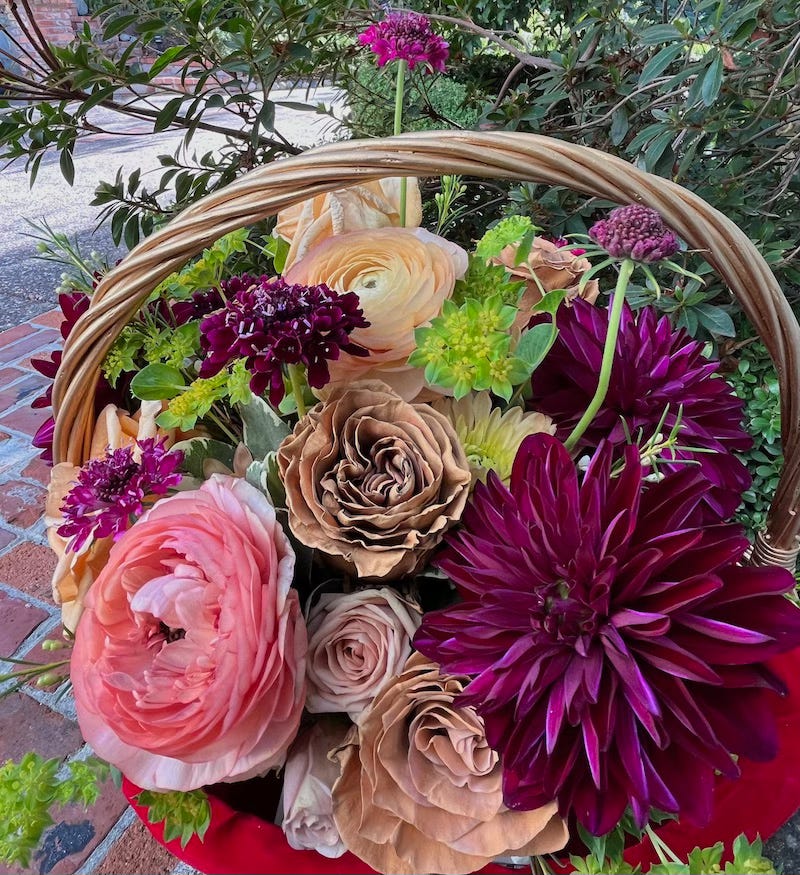
SOW cover crops such as clover, mustard, peas, brassicas, and alfalfa to enrich and protect the soil as well as suppress weeds and feed the birds.
MARK YOUR CALENDAR: Be the Star You Are!® charity volunteers will once again collaborate for the Santa Day at 5A, December 2nd from 11am-2pm, 455 Moraga Rd. #F, Moraga. FREE crafts, holiday treats, plus a photo with Santa and his elf! More info: https://www.bethestaryouare.org/copy-of-events

For more gardening advice for all seasons, check out Growing with the Goddess Gardenerat https://www.CynthiaBrian.com/books.
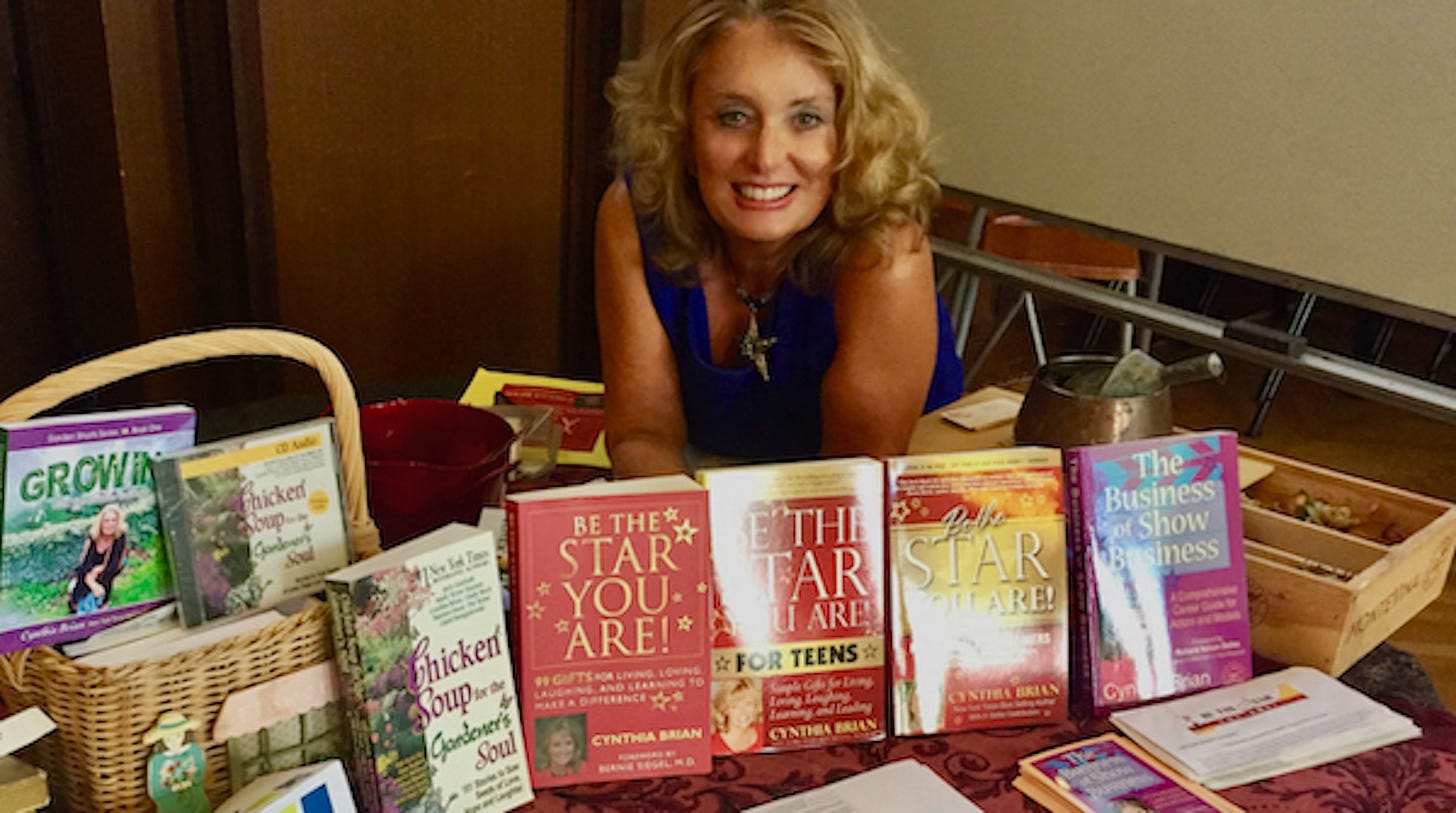
Raised in the vineyards of Napa County, Cynthia Brian is a New York Times best-selling author, actor, radio personality, speaker, media and writing coach as well as the Founder and Executive Director of Be the Star You Are!® 501 c3. Tune into Cynthia’s StarStyle® Radio Broadcast at www.StarStyleRadio.com. Her newest children’s picture book, Family Forever,from the series, Stella Bella’s Barnyard Adventures is available now at https://www.CynthiaBrian.com/online-store.

Hire Cynthia for writing projects, garden consults, and inspirational lectures. Cynthia@GoddessGardener.com
READ at Lamorinda Weekly: https://lamorindaweekly.com/archive/issue1719/Digging-Deep-with-Goddess-Gardener-Cynthia-Brian-Changing-color-guard.html
©2023 Cynthia Brian, StarStyle® Productions, LLC. All Rights Reserved for Text and Photos.
